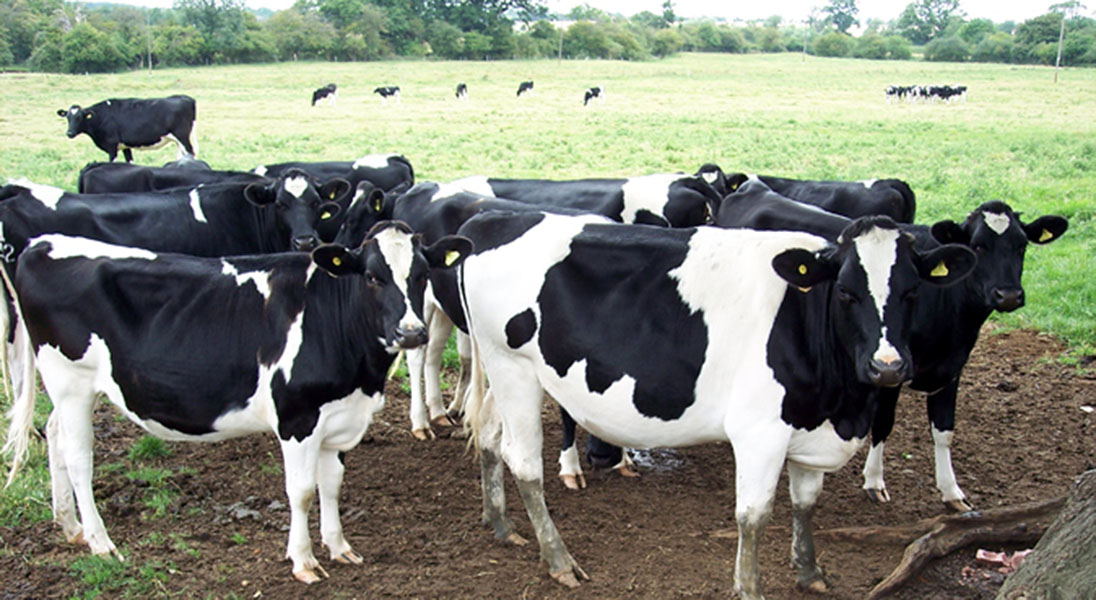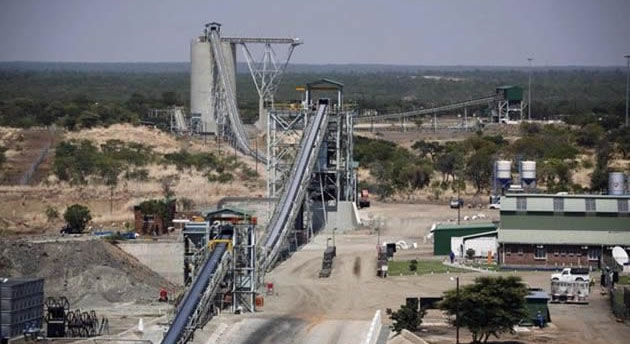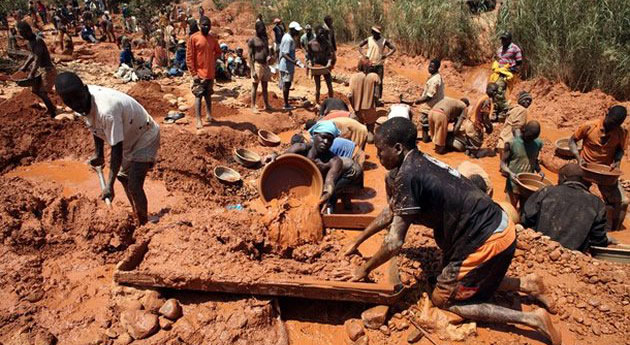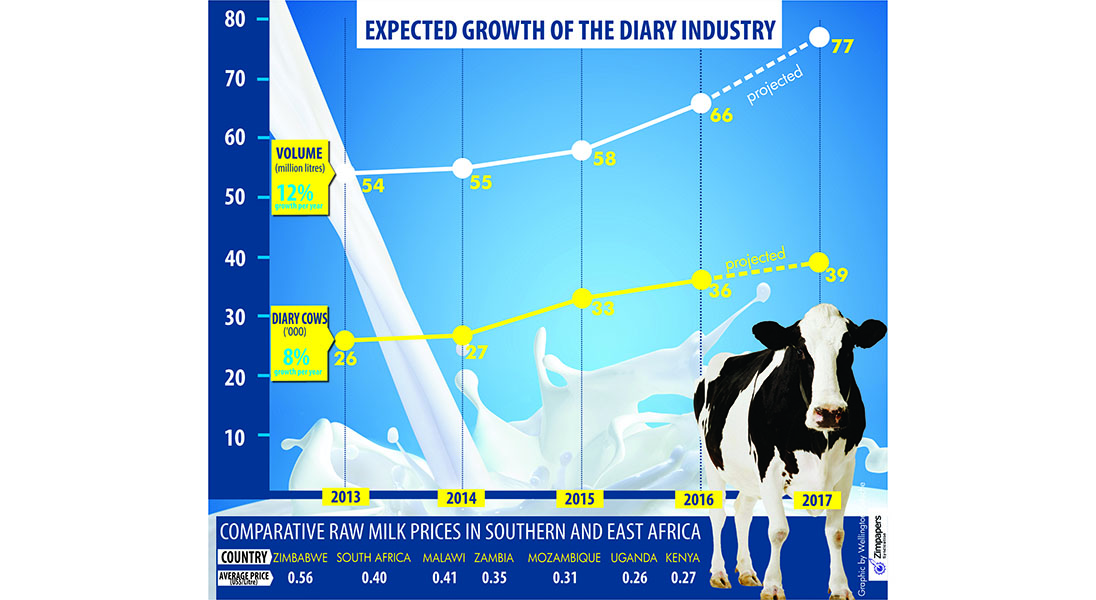Smallholder dairy farmers struggle to survive
- By Zimpapers Syndication |
- 01 May, 2025 |
- 3

Sifelani Tsiko
Smallholder dairy farmers in Marirangwe area of Mhondoro district, about 40km south of the capital, Harare are increasingly becoming less efficient in their milk production and are struggling to
break even owing to drought and the prohibitive cost of feeds.
Marirangwe Dairy Farmers Association chairman, Mr Elfas Maphosa told journalists in the area recently that most small dairy farmers were struggling to make a living off their cows leading to poor milk yields and incomes.
“We are not making as much money as we would want from dairy farming because of lack of capital, prohibitive cost of feeds and the general harsh economic environment,” he said to the media which was on a field tour organized by the Zimbabwe Association of Dairy Farmers (ZADF).
“The quality of feeds we use to feed our cows is poor and the current drought conditions have made things tougher for us as dairy farmers.”
The El Nino-induced drought ravaging Zimbabwe and much of southern Africa in the current farming season has hit the smallholder dairy farmers hardest.
“In the first half of the 2015 -2016 cropping season, our pasture and feed levels were severely depleted owing to drought conditions,” said Mr Elvis Gwanzura, a smallholder dairy farmer with 157 cows, of which 50 were milking.
“Dairy farming is not easy, you have to have enough stock feeds. These things eat and the price of feeds is prohibitive. Things have just improved in the past few weeks following some rains which fell. Pasture levels are good now but we are worried that we won’t have enough feeds in the coming winter and dry season.”
Smallholder dairy farmers often lack the means to produce high quality nutritious fodder in order to supply the nutrients and proteins needed for cows to produce more milk.
The vast majority of them in Zimbabwe struggle to make a living off their cows as they lack good quality feeds, water, clean water and technology to boost milk yields and their incomes.
Another dairy farmer, Mr Melusi Mutapi, who has a herd of 35 of which 11 are milking cows, also said the prohibitive cost of feeds and low milk price presented headaches for small dairy farmers.
“Our milk earns us about 47 cents per litre and our margin is only 20 cents. It’s not easy for us to break even, we have to buy additional feed, buy fertiliser, drugs and vaccines for the animals and seeds for growing the silage,” he said.
“All this does not allow us to make some savings and investment to expand our dairy farming operations.
“All of the costs of running the dairy put together compared to what the individual farmer get back for each litre does not add up for investment in the business.”
Drought is the biggest problem and it usually pushes down milk production levels for small dairy farmers.
“Drought is a major problem for us and we simply do not know how we are going to find adequate feeds for our animals,” said Mr Mutapi.
“It has a major impact on the dairy operations.”
In the long run, the survival of dairy farms in the country will depend heavily on the adoption of strategies for lowering cost of production.
Said Ajs Kirk, an established dairy farmer and owner of Red Dane Farming: “No individual dairy farmer can influence the price of milk on the market. We have no control over market forces.
“As dairy farmers we need to focus more on what we can control - employing an array of strategies to lower our production costs. We simply have to produce our own feed and do everything possible to cut our costs so that we can make money and survive in this industry.”
Kirk is running the Red Dane Farming operations with a herd of 1140 cows of which 510 are milking.
His herd consists of the Tuli and Red Dane – Scandinavian breeds, dubbed the TRex, which are producing 12 to 15 litres of milk per day.
He produces rye grass and maize for feed.
Unlike other smallholder farmers in Marirangwe, Kirk also runs Kefalos – which produces a range of dairy products such as cheese, ice cream, yoghurts and others, something which has boosted his earnings from milk production.
Kirk travels regularly abroad to New Zealand and other countries to learn more about the dairy industry.
“Ajs has been very supportive to us as smallholder dairy farmers,” said Mr Gwanzura. “He regularly shares information with us. He learns a lot from us and we also do from him. He is just different and he gives us hope about the future of dairy farming in Zimbabwe.”
Mr Gwanzura and Mr Mutapi, are successful smallholder dairy farmers and produce 400 and 100 litres of milk daily, respectively.
Said Mr Emmanuel Zimbandu, ZADF national chairman: “We need to support our dairy farmers with long term strategies for livestock development.
“We have to support our farmers to produce their own feed. Feed constitute about 70 to 80 percent of their cost. Producing our own feed will help us to lower our production cost.”
Lack of knowledge has also hampered output from smallholder dairy farmers.
Some farmers who buy bags of concentrates that are mixed and fed to cows to provide the required nutritional content, are at times not aware of the required ratios for mixing concentrates.
These inconsistencies have resulted in the production of low milk volumes.
Established in 1984, the Marirangwe association with a membership of 45 farmers, was created to assist Marirangwe farmers to collectively market their milk to the Dairy Marketing Board, now Dairibord Zimbabwe Limited.
Dairy cooperatives assist farmers on issues such as access to loans, new breeding techniques such as artificial insemination and other dairy farming techniques with direct implications for milk production.
Over the years, support to smaller dairy cooperatives such as the Marirangwe Dairy Farmers Association has led to better milk yields and improved livelihoods for the local small-scale farmers.
Members are now mulling to adopt value addition as a strategy to enhance their earnings from their milk yields.
“We are not getting as much as we would want,” said Mr Maphosa. “In future, we want to add value to our milk. It’s only through value addition, that we can earn more.”
However, Kirk and other ZADF officials advised the association, which is collecting some 800 litres of milk daily, to first conduct a market study before it could plunge into the highly competitive dairy business.
“If you want to venture into value addition, you need to first do market research otherwise you will have to contend with cost related to labour, power, marketing and distribution which you cannot easily absorb,” said a ZADF official.
“Value addition is good but the big players in the industry such Dairibord and others have a bigger pricing muscle to kill any competition.”
According to statistics from the Zimbabwe Association of Dairy Farmers (ZADF), the current national herd stands at 5,3 million but only 0,05 percent (26 502) are dairy cows who produce only 54 million litres per annum as compared to 256 million litres in 1990.
Zimbabwe is importing 60 percent of its milk from South Africa.
Local dairy farmers have repeatedly complained to the government to impose a ban on foreign dairy products which have flooded the local market.
Such a ban, they argue, will support the local sector to boost production.
“If we give help to small scale dairy farmers this will lead to improved livelihoods and job creation within our dairy industry,” said Mr Zimbandu.
“If we continue to work together, along with all our partners, we will succeed in our efforts to revive the dairy industry in Zimbabwe and make more vibrant once more.”
Smallholder dairy farmers and the ZADF say the Government should seriously consider funding the dairy sector because it has the capacity to generate foreign currency and create employment.
In the 1980s and 90s, small holder farmers used to play a pivotal role in supplying milk to the then Dairy Marketing Board (DMB).
Their role has diminished over the years due to poor access to new technology, lack of enabling policy environment, poor funding and dwindling donor support.
No Comments














Comment